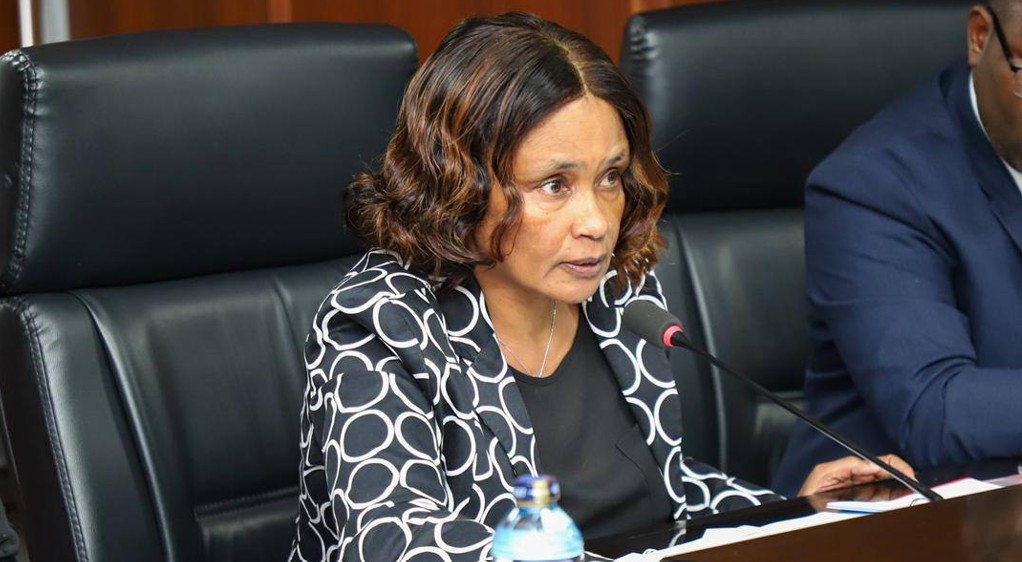Teachers to apply for transfers online under new TSC system that aims to boost accountability

TSC Acting CEO Evaleen Mitei said the commission developed the system to ensure equitable distribution and optimal deployment of teachers while advancing the digitisation goals in its 2023–2027 Strategic Plan.
Teachers across the country will now be able to seek transfers digitally through a new Teachers Service Commission (TSC) module that seeks to end the need for physical follow-ups at TSC offices.
The system, which begins a three-month pilot on August 18, will allow teachers to apply for transfers or swaps online, promising faster processing and greater transparency.
More To Read
- TSC clears 1,436 primary school teachers for deployment to junior schools
- Parents, teachers hail launch of modern libraries in Lamu schools to nurture reading culture
- HELB rolls out loan scheme for civil servants pursuing further studies
- MPs clash with civil society group over report criticising education sector
- TSC announces over 45,000 teaching and internship vacancies
- KUPPET condemns TSC for ignoring decade-long teacher promotion backlog
In a circular to Regional, County and Sub-County Directors, TSC Acting CEO Evaleen Mitei said the commission developed the system to ensure equitable distribution and optimal deployment of teachers while advancing the digitisation goals in its 2023–2027 Strategic Plan.
“As part of the effort to promote automation and digitisation of services, in line with the institutional transformation goals, the TSC has developed the ‘Teacher Transfer Module’ to manage this critical function,” Mitei said.
The module introduces features such as automated matching and swap functionality, subject and level-based matching, structured timelines, notifications and mandatory minimum tenure for transfers. Teachers will be able to access and accept requests based on school level and subject combination, where applicable.
The system also facilitates mutual swaps, locking matched pairs once both parties agree to avoid duplication. Transfers will align with the school holiday calendar to minimise disruption. Real-time notifications, escalation of delays, and integration with record systems will also be part of the process.
“Transfer requests will be filtered, based on institution level, for instance, primary, junior school, senior school or teacher training colleges and by relevant subject combinations where applicable, including requests for newly recruited teachers,” Mitei said.
Teachers will be allowed to submit swap requests before completing five years of service. However, if the system does not find a suitable replacement within 90 days, an email will be sent to the applicant granting a 90-day extension. After 180 days with no replacement, a regret letter will be issued.
“Unless in exceptional circumstances conclusively demonstrated by evidence, a teacher must serve for at least three years in a current station before applying for transfer,” Mitei said.
“However, this provision will not be applicable where the commission, in exercise of its mandate, transfers a teacher from one station to another.”
To minimise interruptions to learning, approved transfers will be implemented during school holidays, except in emergencies backed by evidence. Once approved, the system will send digital transfer letters directly to heads of institutions via their official email addresses. Any delays beyond five working days will be automatically escalated to the next-level supervisor.
The system will be integrated with the Teacher Management Information System (TMIS), the Entry-Exit System and the Electronic Document Management System for real-time updates and record-keeping. However, transfer requests will still undergo validation by panels at Sub-County, County, Regional and Headquarters levels before being approved by the relevant officers.
“Continue to apply for transfers via the commission’s website,” Mitei urged headteachers and deputies.
She outlined the benefits of the system as efficiency in processing requests, identification of suitable replacements, real-time tracking of applications, reduced paperwork and travel costs, improved accuracy and data integration, and enhanced transparency and accountability.
“The module will automate and enhance the turnaround time, thereby reducing delays and manual workload, and enhancing efficiency in teacher transfers. The system will enable the commission to identify suitable replacements. It will also enable teachers to apply for mutual transfers (swaps) using the portal, increasing flexibility and reducing delays,” she said.
Mitei added that teachers would be able to monitor their applications online, reducing anxiety and eliminating unnecessary visits to the commission offices.
However, the rollout has sparked mixed reactions from unions. Kenya National Union of Teachers (KNUT) Secretary General Collins Oyuu criticised the TSC for failing to involve unions in consultations.
“We need to know the benefits, advantages and disadvantages of the system before it is implemented,” Oyuu said.
He further argued that the previous system already allowed teachers to apply for transfers online and had been working well.
On the other hand, Kenya Union of Post-Primary Education Teachers (KUPPET) welcomed the move. Acting Deputy Secretary General Moses Nthurima said the digital module could reduce delays and misuse.
“Teachers used to get responses a month after applying for a transfer or a swap. KUPPET welcomes the new module, especially if the commission responds within a reasonable time, as we have been told. The previous system was prone to abuse and corruption,” he said.
Top Stories Today














































